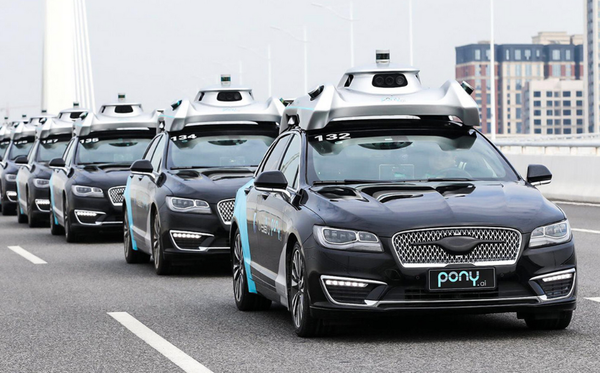📬 Remix Reality Weekly: Cities of Bots and Digital Twins

Your free Friday drop of spatial computing updates—plus what Remix Reality Insiders unlocked this week.
🛰️ The Signal
This week’s defining shift.
Ad blocking is coming for the real world.
We’re entering a moment where editing the real world isn’t just possible, it’s something people want. And ads are the first to go. This may reveal a deeper desire for agency over our perception of reality and a fear that brands will take that control first.
👉 Get the full insight in this week’s Insider drop.
📡 Weekly Radar
Your weekly scan across the spatial computing stack.
🤖 Amazon Launches DeepFleet AI and Surpasses One Million Robots in Operation
- DeepFleet AI model enhances robotic fleet travel efficiency by 10%, resulting in faster deliveries, lower costs, and reduced energy consumption.
🍔 Serve Robots Hit Atlanta Sidewalks as Nationwide Expansion Gains Speed
- Serve Robotics has introduced its AI-powered delivery robots to Atlanta, expanding into a fourth major U.S. metropolitan area.
🏭 frontline.io Powers Digital Twin Training on HMS SiNGRAY G2 AR Headset
- frontline.io’s software will come pre-installed and optimized on the HMS SiNGRAY G2, offering enterprise-ready AR out of the box.
⚕️ HealthpointCapital Acquires XR Surgical Planning Firm ImmersiveTouch
- ImmersiveTouch's platform enables surgeons to create interactive 3D plans and visualize procedures using mixed reality headsets.
🏙️ McKinsey Finds Digital Twins Can Boost Public Sector ROI by Up to 30%
- According to a McKinsey report, digital twins can improve capital and operational efficiency of government infrastructure projects by 20-30%.
🛠️ Unity Locks In Android XR for Production-Ready Development
- Developers can now build confidently for upcoming Android XR-based headsets using Unity’s stable toolkit.
💰 Genesis AI Raises $105M to Build Universal Platform for General-Purpose Robots
- Genesis AI exits stealth to develop a universal robotics foundation model and platform designed to automate physical labor.
🌀 Tom's Take
Unfiltered POV from the editor-in-chief.
When it comes to AR glasses, there’s no rush to put displays on our faces.
As much as I believe in the future of true AR smartglasses, the near-term win is all about AI glasses. These lightweight, stylish, audio-first devices have cameras that act as eyes to enable a smarter AI assistant and are not trying to replace your smartphone but rather complement it.
The smartphone remains the best screen we have, and it plays well with others. The right next move to get from our smartphone to our eventual wearable future feels like taking a baby step in phone co-existence rather than outright replacement. The near future looks more like Her, where if the AI has something to show you, you simply grab the screen from your pocket that you already have to check it out, rather than Iron Man, where it's all up in your face.
Starting with displayless AI glasses puts the focus on its killer app, AI. Once people experience the daily value of AI in a device they actually want to wear, everything shifts. It builds trust, creates habits, and sparks demand for more. Displays will come, but not as the starting point. They’ll arrive when users are ready, not when the industry is.
Keeping the device simple also makes it lighter, cheaper, and more wearable, which are also key ingredients for adoption.
To get to our post-smartphone future, we need to earn our way there. And AI glasses are the right first step.
🔒 What Insiders Got This Week
This week’s Insider drop included:
- 🧠 Reality Decoded: Brands are starting to explore mixed reality marketing.
- 🔮 What’s Next: The race for the robot brain; fleet management is now a software story; and enterprise XR bundles.
👉 Unlock the full drop → Upgrade to Insider
🚀 Thanks for helping us decode what’s next and why it matters.
Know someone who should be following the signal? Send them to remixreality.com to sign up for our free weekly newsletter.





